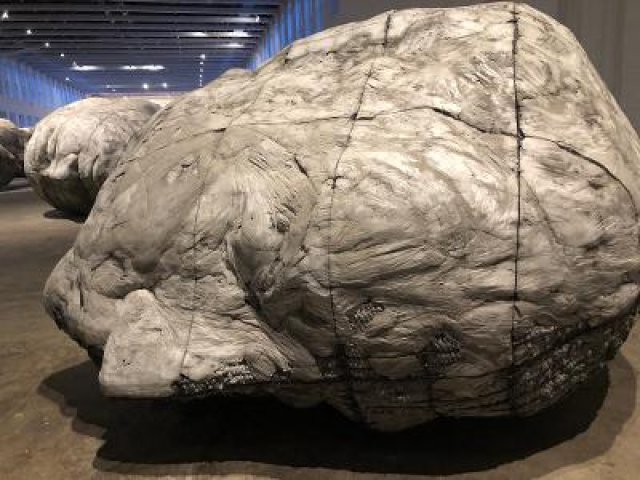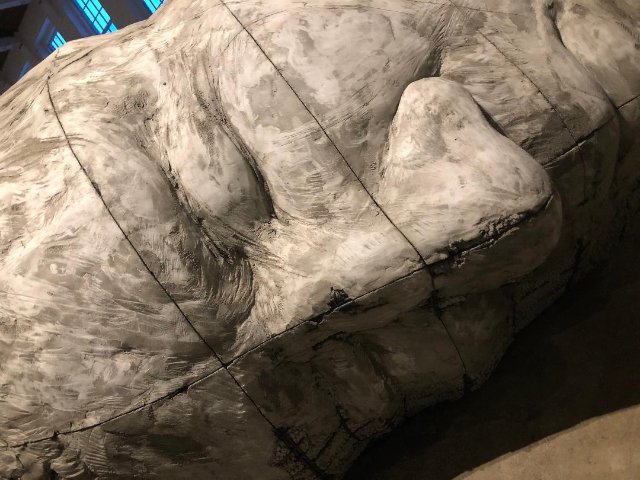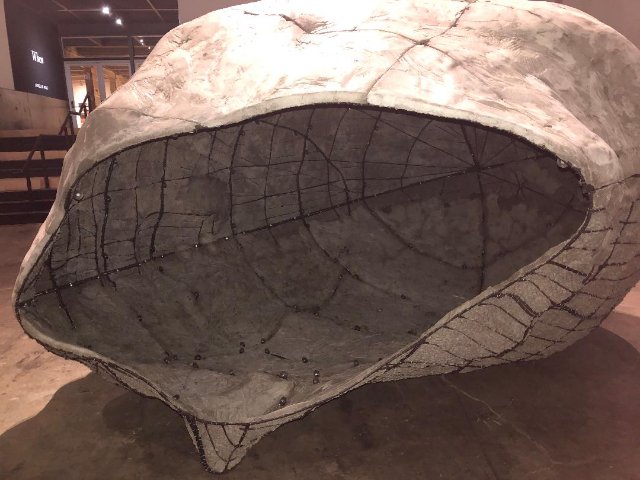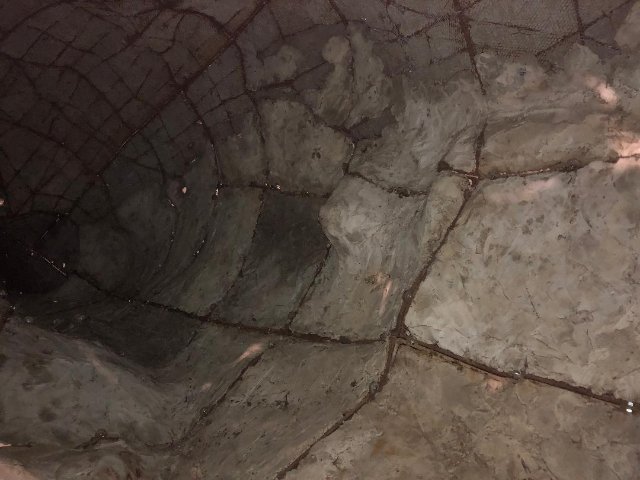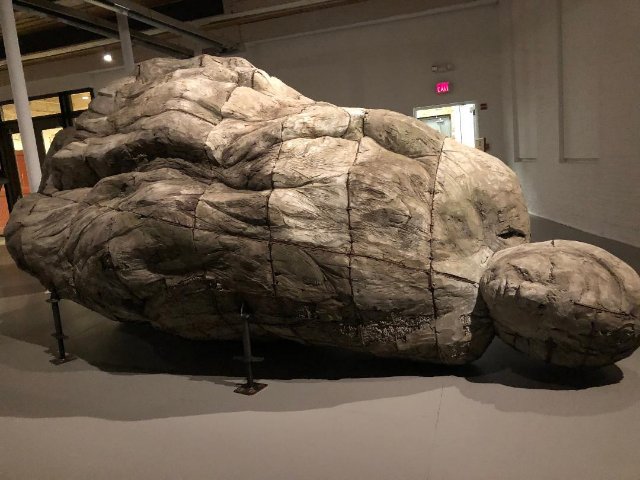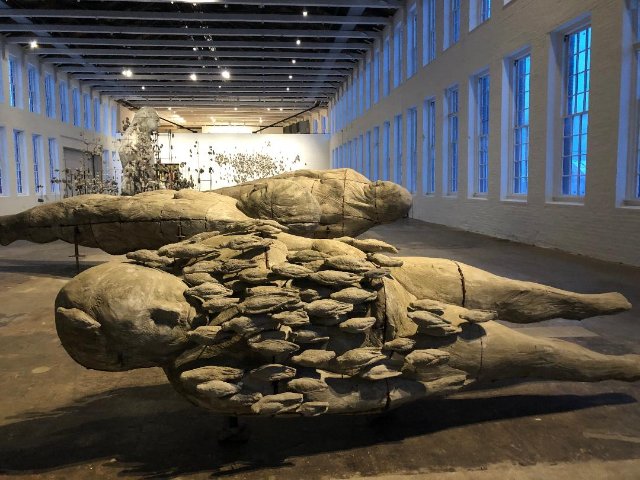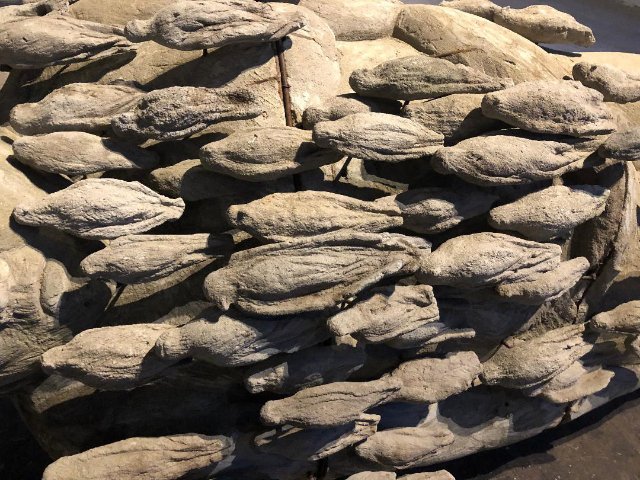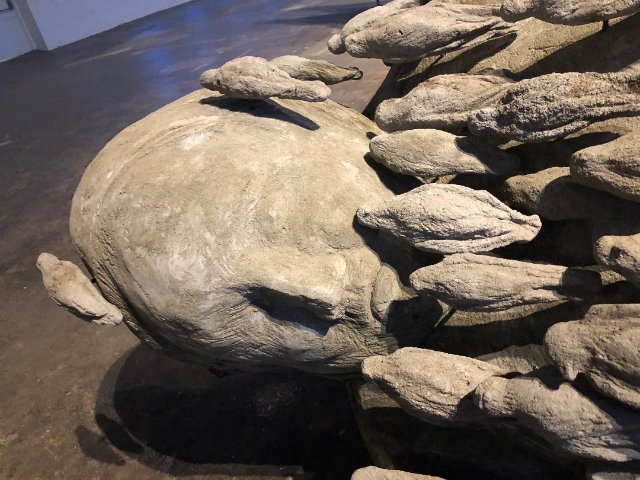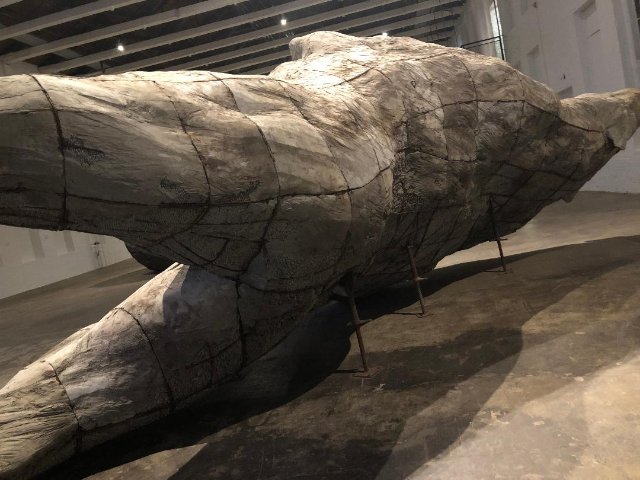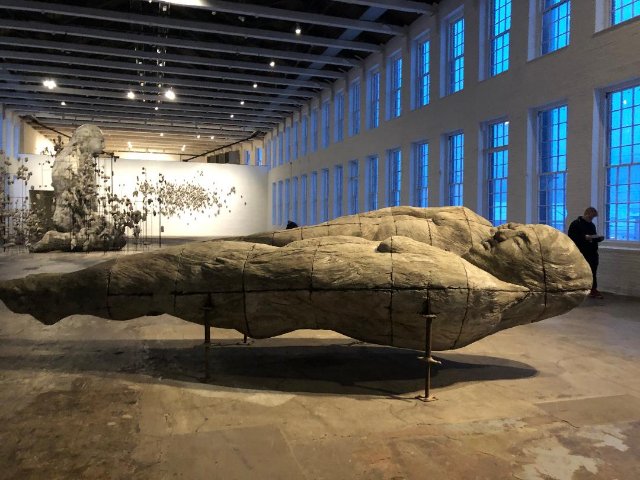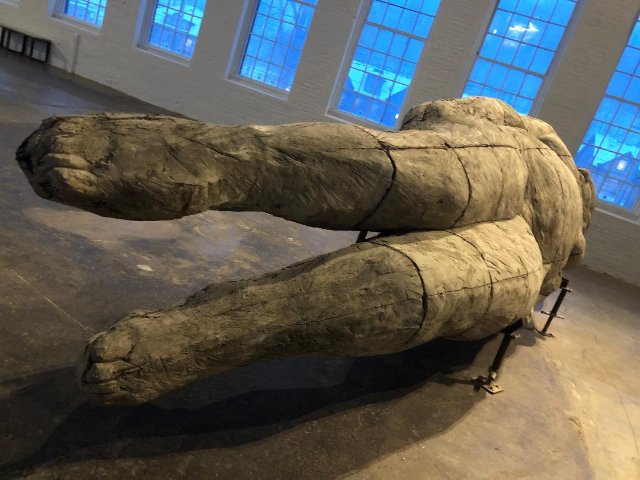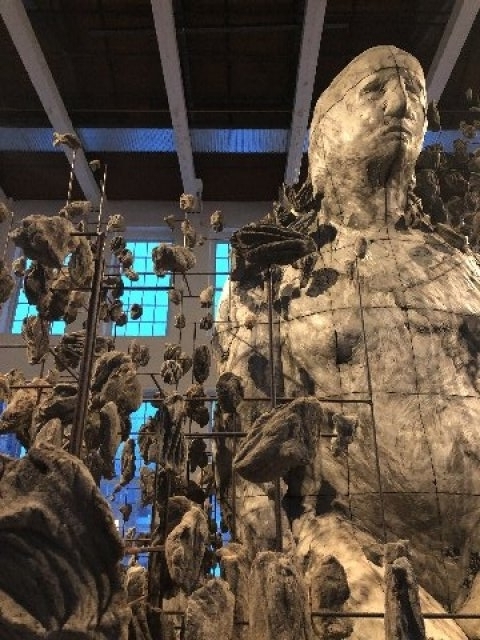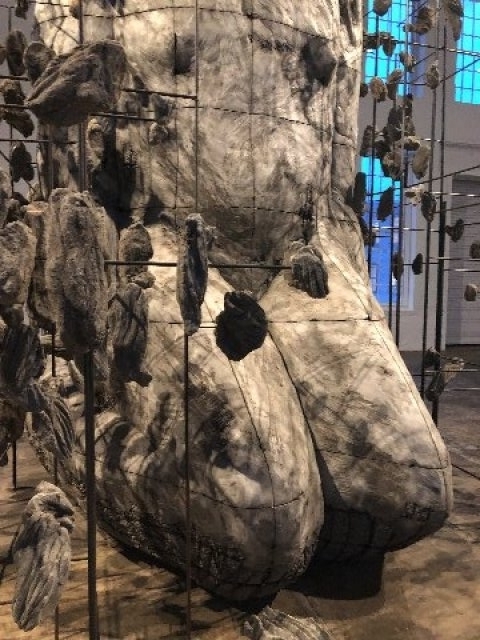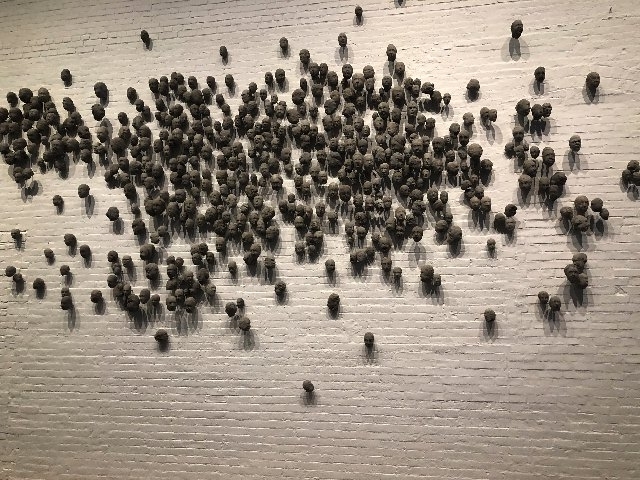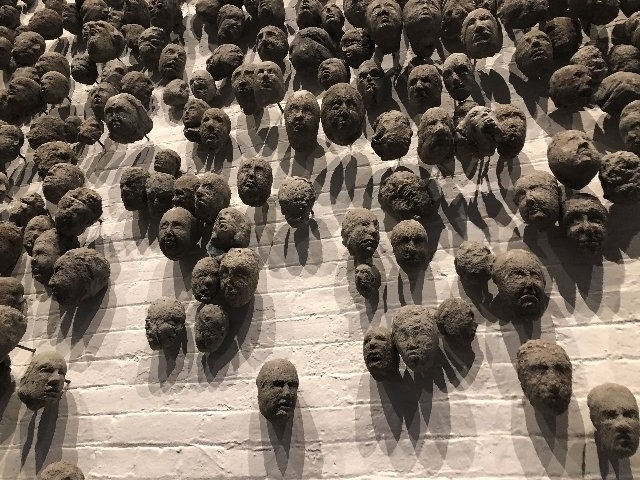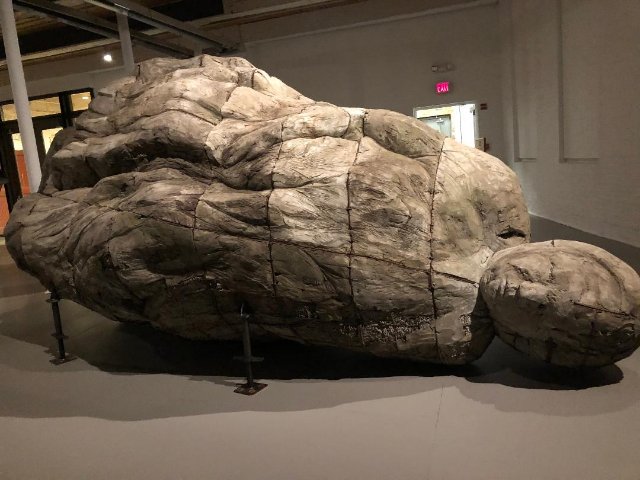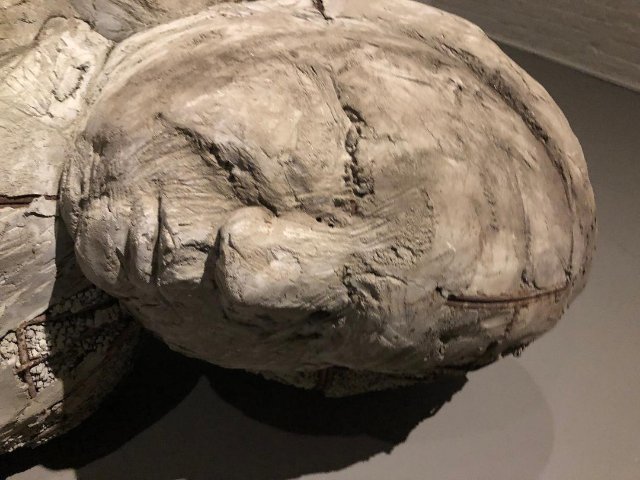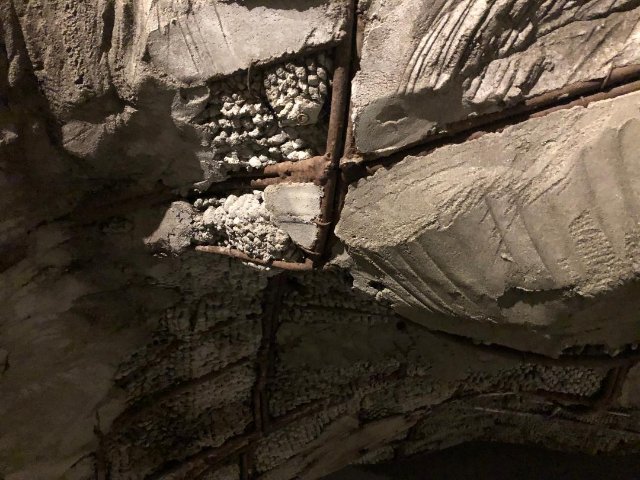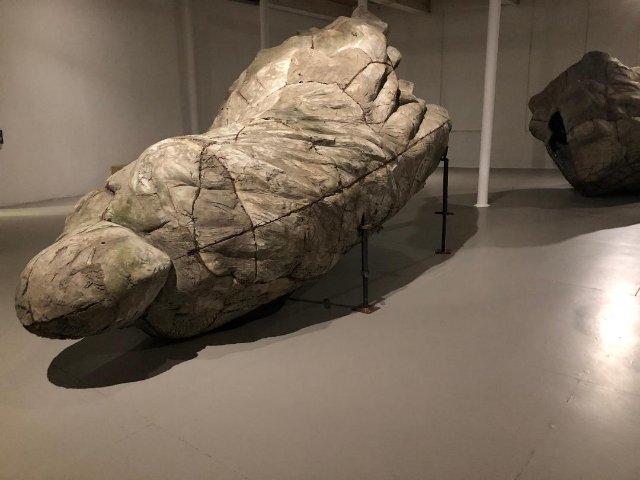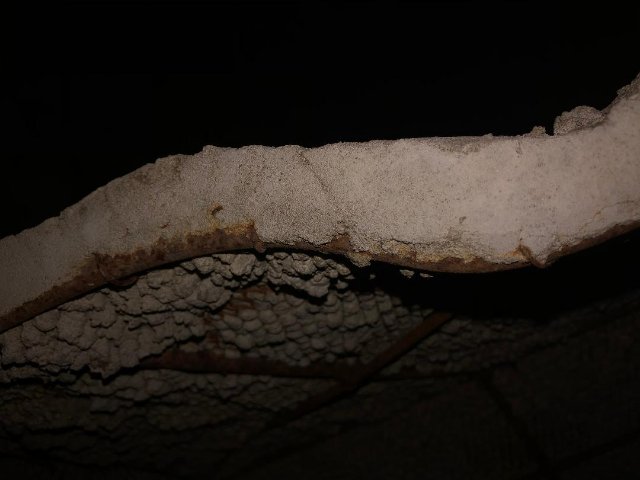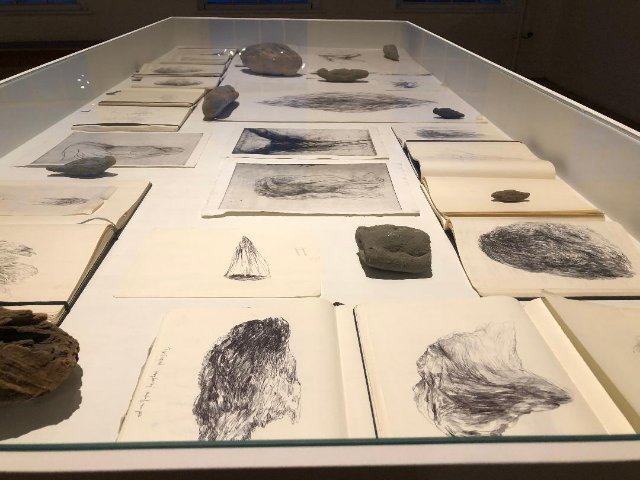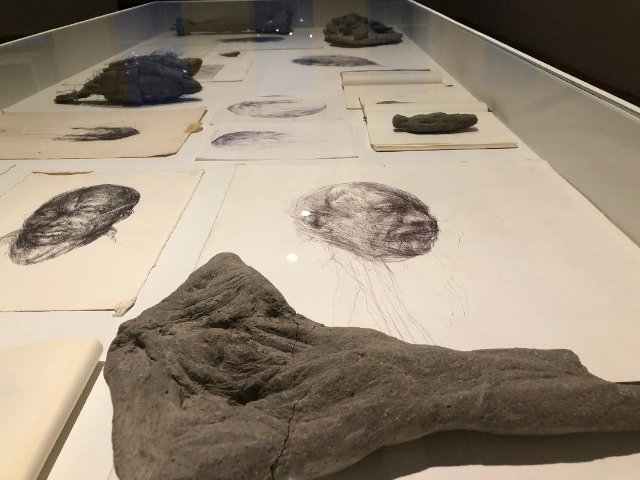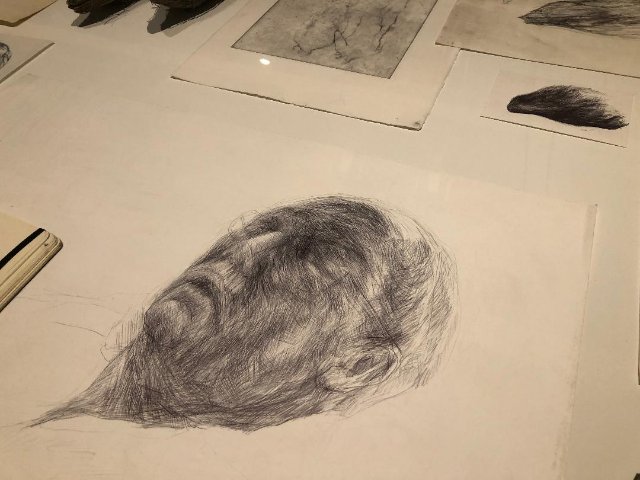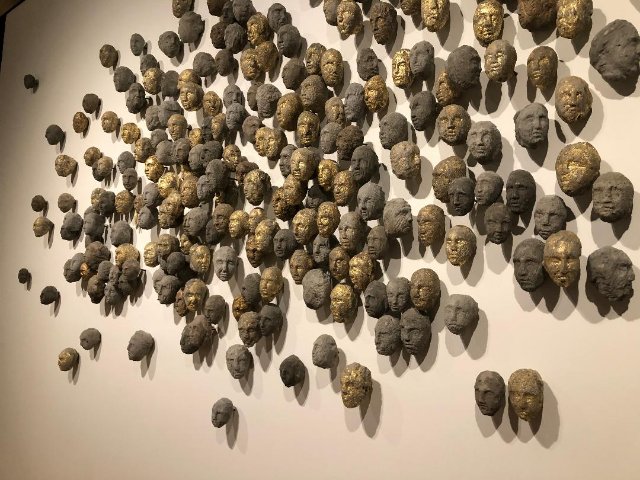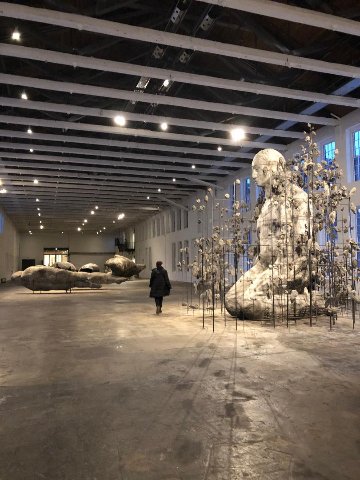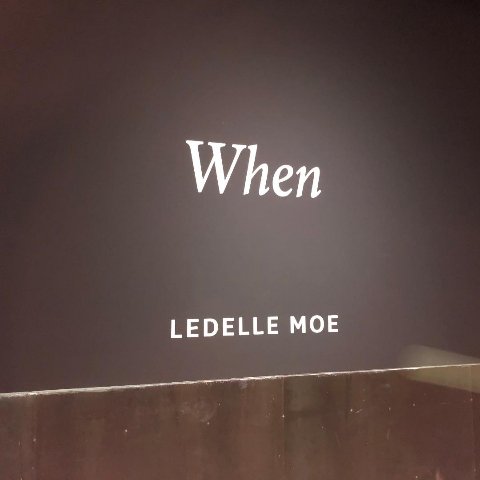WHEN, show at MASS MoCA
By Ledelle Moe
By: Astrid Hiemer - Jan 25, 2020
WHEN - By Ledelle Moe – At MASS MoCA, North Adams, Massachusetts
Until September 7, 2020 - curator: Susan Cross
WHEN: Searching for Personal Meaning and Memories, via a
Monumental Sculpture Exhibition That Expresses Obliquely Life and Death Issues of Today and Since Millennia.
We stepped into the Building 5 exhibition from a side door, just after leaving a memorial celebration and show for Robert D. Riddell, III. More than 200 paintings and drawings had been exhibited for a day and for the first time. It was a somber exhibition of stark portraits, disturbing, almost singularly expressive; and we learned that Riddell had worked on portraits until near the end of his life.
There, we were confronted by one immense head, made of concrete and lying on the concrete floor. Next, we saw a second head and it took some time before the entire exhibition came into focus, while we were walking around the huge forms, as large as 4 x 15 x 14 feet each. Building 5 is the largest and a raw gallery space at ’MoCA’ and perhaps throughout museums in the USA.
Moe created these sculptures since 2005. Seven works in the main gallery have titles, such as, Memorial (Collapse), Transitions/ Displacements and Remain and each weigh 2000 pounds or more. Single handed she completed the final process of the pieces in sections, over a form of wire mesh, in memory of young African men, who had been murdered in war; and in later years, after she lost her grand-mother and mother. She has worked with assistants, here and in South Africa, for lengthy and demanding preparations to complete each work. Death permeates the exhibition - and so does life. The kneeling 18 foot tall female sculpture, or perhaps a female Buddha, is surrounded by life forms from the oceans, also made of concrete with beach sand, perhaps. An amorphous animal sculpture as well as two full body male-like works fill the main room. A tall wall at the end of this gallery leads toward the dark space on the main floor, where two additional bodies are positioned. The wall, however, is filled with small heads, which Moe has formed during a number of the years. To the cement she would add soil or sand from places, where she was living and working at the time.
The much smaller second floor gallery overlooks the expanse of Building 5. Drawings and small sculptures are exhibited there in two long cases as well as on a second wall. The overview from above heightens expressions and impressions of those stark, monumental sculptures below. In totality they project a heavy sense of life and death now and ‘since.’
Moe, who was born in 1971, is South African and returned permanently to her home land in 2013 after residing in the USA for many years. She lives and teaches at Stellenbosch University in Cape Town. Moe completed her Master’s Degree in Sculpture, 1996 at Virginia Commonwealth University (VCU), where she later taught sculpture. She also worked and taught at Maryland Institute College of Art in Baltimore (MICA), and St. Mary’s College in Maryland.
She has exhibited in the US, Europe, India and, of course, in Africa in the course of 20 plus years. Her work has been ‘permanently’ installed at the North Carolina Museum of Arts’ Museum Park in Raleigh. Concrete, however, is not permanent and several bodies in this exhibition already show areas of decay. Life and nature have always returned to mountains, earth, or oceans. This exhibition speaks to life and death today as well as to time and evolution from the beginning of nature and life forms.
Since our visit of WHEN, now more than a week ago, the exhibition has followed me in work, thoughts, and as it turned out, in my dream:
Just waking up from a serial dream this morning, I had been transported back to 1969/70. A woman’s voice spoke to me of death in Vietnam. I remember dreamlike thoughts from a time so long ago, truly baffled!
And WHEN evokes funary ideas and memories in me of people, in particular brave women friends and family members, who have died of breast cancer and would insist that they are just living out their lives as best as they can. It is always a testament of an amazingly strong human will to life on earth and continues to touch me deeply.
Meryl Brater died at age 47. She knew that she would die young, she said so to me during an intimate conversation some years earlier. She was fierce and clear headed. Her body was laid in a tear-drop shape casket at home that same day as it is written by the Jewish faith. The fine, light colored wooden casket was just big enough for her body - an artist’s work. The memorial celebration that evening brought together more than a hundred people, alerted through phone calls and word of mouth. I still cherish her print series in our collection, titled: Skin Grafts, 2/5, 1995. We must show it again. The only other portfolio of this work that Meryl finished is owned and has been exhibited in the weeks after she passed by the Rose Art Museum, Brandeis University, Waltham, Massachusetts. Much of Meryl’s non-figurative work had a fine and intricate Asian feel and expression.
We also miss and remember Berkeley Boetcher, whose funeral was much different. She was 55 years young and died in a very good palliative care facility with husband Karl and her sister, Carter, present at her side during her final weeks. Berkeley moved through end-of-life stages supported by theory and ceremonies to say good-bye from home to family to friends to their dogs and places and nature in order to reach a peaceful end. Did she? Occasionally, I would drive one-way nearly two hours to be with her during those final weeks. Berkeley also decided, who should be invited to the funeral and wrote out her funeral proceedings. She had weeks to think about it. There, for the first time, I saw a mahogany casket enshrined in a massive concrete shell, then lowered into the grave according to State Laws. Why, I still ask!
Brigitte Hiemer, my brother Arnoe’s wife, died at age 60 in Hamburg, Germany. The cancer had also lodged in her brain, too late detected, just a year or two after a mastectomy. Brigitte was found by Thorsten, her son, unconscious on the floor in their apartment and passed away only days later. To support my brother in his sudden grief I spent several days with him after the funeral, before flying home again. Arnoe and Brigitte, a vivacious and energetic woman with a strong view of life, had visited us in Boston during the last Century, while traveling with her sister and husband. They were on a USA and Canada tour and stayed for several days with us, vastly impressed, of course, by North America. Among sight-seeing tours, we introduced them to BBQ.
Margot Mueller, my last maternal aunt, died recently in Ahrensburg, near Hamburg, at age 86. She was the oldest of three generations of women in the ‘Hartmann clan’ who have died of breast cancer. All other women did not reach 80, and Margot told me that her cancer was only detected after her 80th birthday. For years we used to entertain long distance calls every few weeks. She and her husband, Horst, had also visited us in Boston in the 1990’s. And both were guests of honor - as loving, strong, and fair-minded seniors - at a family gathering in Hamburg, which I had organized from the USA. 12 families came to meet in 2015 on an Easter Monday. These 40 participants all have relatives, parents, or grand-parents born into the original Hartmann family. Margot was the last of seven children in my mother’s generation. Her memorial celebration is now scheduled at the end of January, merely 5000 miles away. We will not attend in person and I am sorry not to be present.
And, yes, we have experienced and known of births and deaths by many more acquaintances, friends, and family members over the decades. I wanted to write here primarily about women, who lived active and full lives after being diagnosed with cancer, and who are still with me in my heart. I honor in private thoughts women and men, who are still living with the disease.
Finally, returning to WHEN: For a moment it occurred to me, and I photographed some of the large openings of the sculptures, to crouch or stretch out inside – to fully absorb what this exhibition conveys. -- However, don't touch, don't do it!

